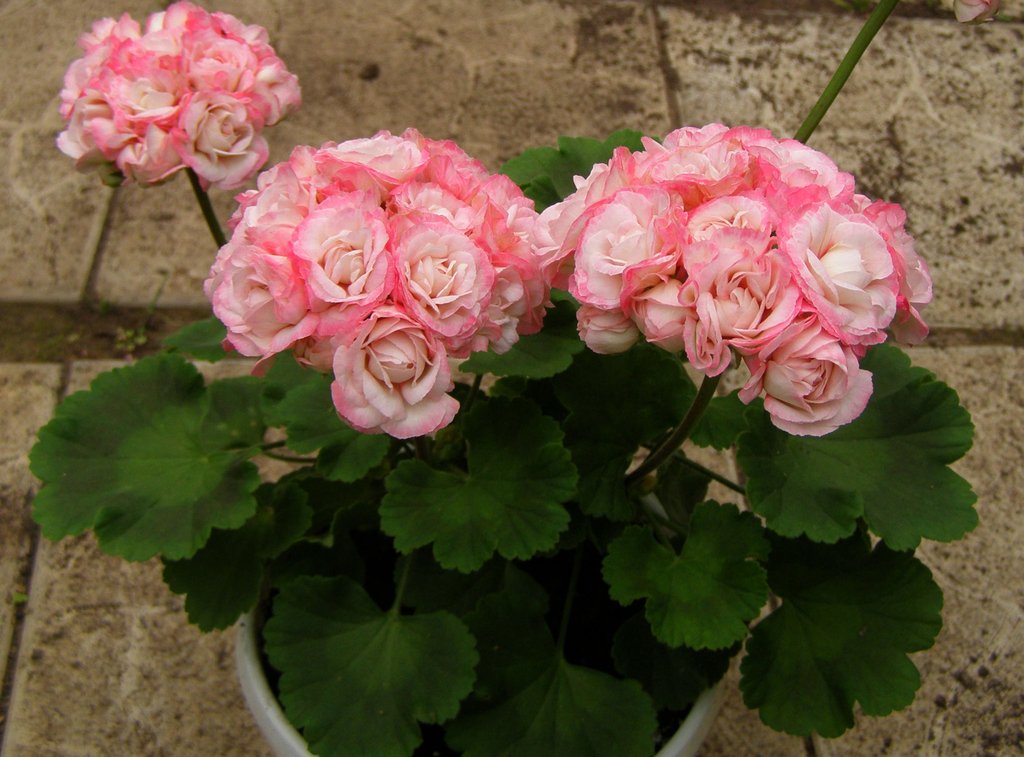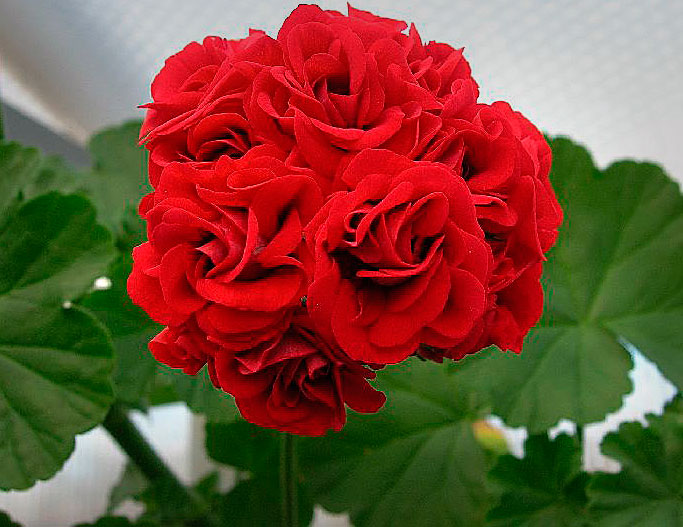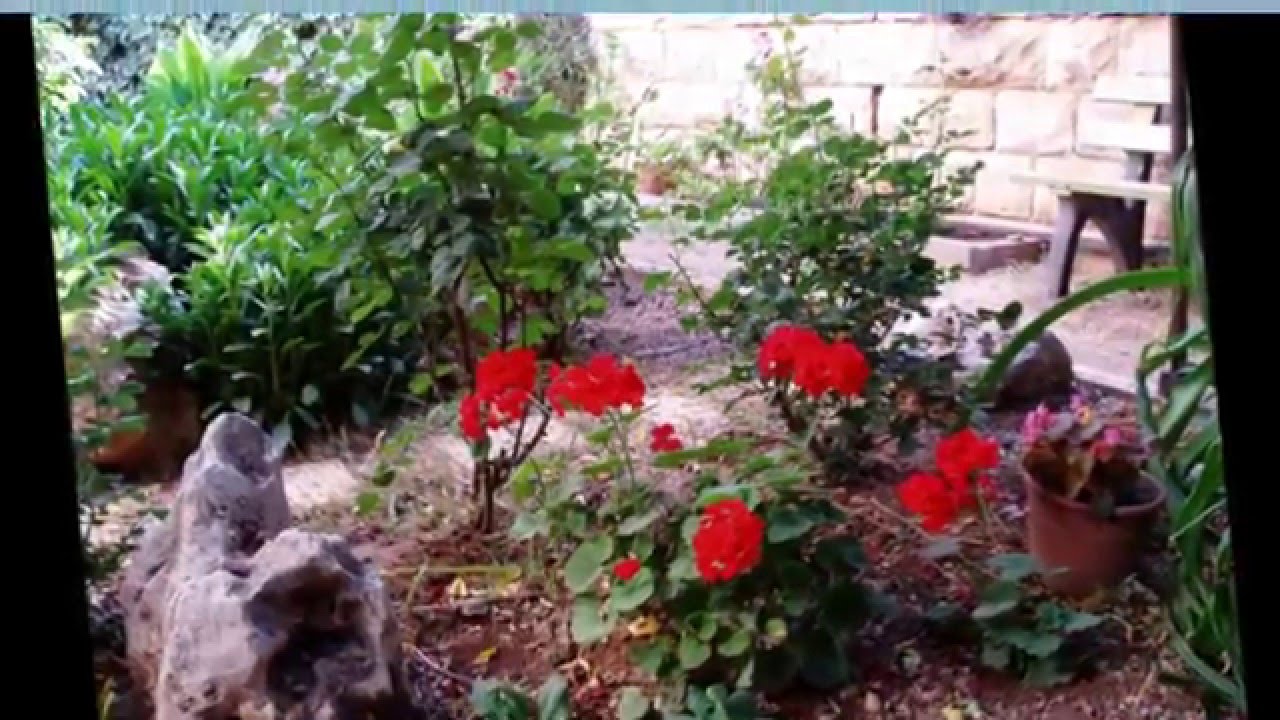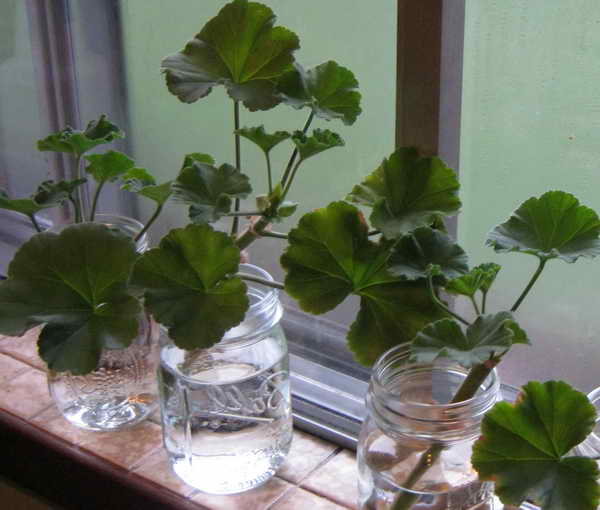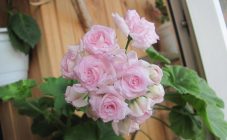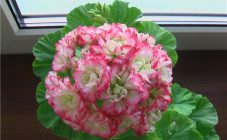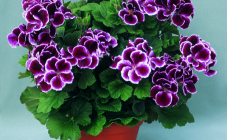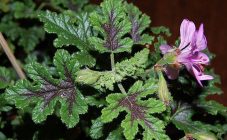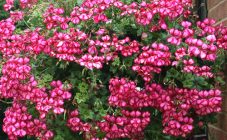Content:
The beautifully flowering plant Pelargonium (translated into Latin - "Pelargonium") belongs to the numerous Geraniev family. Currently, about 350 varieties of this plant have been classified. In nature, in the wild, pelargoniums grow in the form of perennial herbaceous crops, succulents and even shrubs. Among all this vast blooming splendor, the leading place is occupied by the rosy beauty of pelargonium Denise.
Its history of appearance in Europe begins in the distant Cape region, which is located in southern Africa, where this beautiful flower is found in the form of local vegetation. When colonizing this part of the world, Europeans transported the plant to the European continent. The plant's popularity began in the 18th century, it first appeared in England, then breeders from Europe and Russia became interested in it.
Characteristics and features
Denise Pelargonium is highly regarded for its harmonious combination of charming appearance and easy growing. The plant is called the standard of beauty for a large variety of rosaceous pelargonium. Currently, thousands of lovers of beautiful flowers want to cultivate this luxurious flower culture in their flower beds and gardens. There are even clubs and online forums for rozobud lovers, where the nuances of growing Denise pelargonium are actively discussed.
Characteristics and description of the flower culture:
- The compact and sturdy plant looks like a miniature bush.
- Leaves are dark green in color with a dark border around the edges.
- The buds outwardly resemble small double roses of light pink color with a brighter edging of delicate petals.
- Inflorescences in the form of fluffy caps are abundantly and evenly distributed on long pedicels throughout the bush.
- The color of the buds is very effective with smooth transitions from a light center to a more saturated shade to the lower petals.
- The fruit is a seed capsule with small seeds.
The closest "relatives" of Denise Sutarve's pelargonium are zonal rosaceous varieties, which are united by an external similarity with the royal flower - a rose. It is this variety that is considered the most spectacular and perfect. The appearance of the flower causes real admiration and is considered the height of graceful beauty. Looking at this extraordinary beauty, you will never think that this beauty is, by and large, just a geranium.
Popular varieties
There are several varieties of Denise Pelargonium. All of them belong to the category of zonal rosaceous pelargoniums. To understand how they differ from each other, you can read a detailed description of the two most popular varietal plants.
Pelargonium Denise and Denise Sutarve, what are the differences:
- Denise from the Swedish nursery Sutarve is a small compact plant growing as a bush. Abundant flowering with "roses", the petals of which do not open up to the end. Half-tones of a delicate salmon pink shade with a wide border along the edge.
- Denise (breeding Belgium) blooms with buds in the form of miniature roses, which open completely. In a fully opened bud, stamens are visible in the middle.
Currently, it is these varieties of pelargonium that are at the peak of their popularity. Every florist dreams of growing a stately beauty in his flower garden. In order to purchase a stalk or an adult plant of these particular varieties and not buy a fake, it is better to make a purchase in proven nurseries with a good reputation.
Agricultural technology of cultivation
Gentle Pelargonium denise sutarve requires special care:
- It is not recommended to place a flower container with a plant in sunny unprotected places. In direct sunlight, the decorativeness of flowers is quickly lost, the petals become faded, the flowering of the plant decreases, and it looks unhealthy. When grown in the open field, the hot sun does not pose a big threat to the decorative effect of the rosette.
- Moderate watering with lukewarm soft settled water. Excessive watering should be avoided, causing root decay.
- Plants do not tolerate low temperatures poorly, therefore, when the outside temperature drops to +10 degrees, the flowerpot should be removed from the balcony or loggia, when grown in open ground - covered with a covering translucent material.
- The transplant is carried out in early spring, when an increase in daylight hours will cause an active growth of pelargonium.
- The recommended composition of the earthen mixture includes sod land, peat, coarse sand, perlite and humus. The constituent parts of the soil are prepared at the rate of 4: 2: 1: 2: 2. If it is not possible to prepare the soil mixture on your own, you can go shopping at a flower shop and purchase a ready-made flower soil for pelargonium with neutral acidity.
It is recommended to cut the grown pelargonium correctly to get a compact, beautiful bush. Too long shoots are shortened and branches are left 10-15 cm long. In a month, the plant will form into a pretty bush and will be ready to bloom.
Plant propagation
Denis pelargonium reproduces in the same way as all of its “neighbors” pelargonium: by seed and cuttings. When planted with seeds, there is no guarantee that the plant will inherit all the characteristics and characteristics of the variety.
For this reason, rosebud pelargoniums are propagated exclusively by cuttings. Novice growers often complain about decay of planted cuttings. It is very disappointing when the stalk of the cherished dream - the beautiful Denizka - is acquired with such difficulty, and the efforts made do not bring the desired results, and the plant does not take root.
In order not to experience such disappointment, you can use the following recommendations:
- The optimal time for plant rooting begins in March and lasts until July.
- Cuttings are harvested from an adult plant. To do this, a cutting with 3-5 pairs of leaves is cut from a semi-lignified shoot. If you take a green herbaceous shoot, then a full-fledged cutting will not work out of it.
- The soil mixture for germinating the plant should be light and breathable, for example, peat + soil or coconut filler, the main thing is that the soil is with neutral acidity.
- The cuttings are dried on paper in the open air for one to two hours, the lower leaves are removed and planted in the ground, slightly buried in the ground.
- The planted stalk is carefully watered, trying not to create excessive moisture.
- Water for irrigation is preliminarily defended for several hours at room temperature.
- The container with cuttings is exposed for rooting in a bright, well-lit room, for example, on a windowsill. Approximately in half a month, the cuttings will acquire the first thin roots.
- As it grows, the flower is periodically fed with potassium-phosphorus complex fertilizers.
- In winter, the plant slightly loses its decorative effect and practically does not bloom. Therefore, it is best to leave the rosebud at rest until spring, rarely water it and not apply any fertilizers. The recommended winter temperature for Denizok is only + 10-15 degrees.
Advantages and disadvantages
Pelargonium Denise are the undisputed favorites of the Geraniev class and are highly valued by flower growers for the following advantages:
- Huge double "roses" of delicate peach shades with pink edging of petals.
- Dense buds with a large number of petals during flowering are collected in an even flower rosette.
- In hot weather, the bud fully opens into a gorgeous rose.
- The Denise plant forms into a small, compact bush.
The rosy beauty Denise has practically no flaws. There are only a few features of this wonderful plant that should be considered when growing it:
- In hot sunlight, the variety can change its delicate color to a more intense saturated color.
- In hot weather, shredding of leaves and a decrease in the number of inflorescences are noted.
- Rozobudki do not tolerate low temperatures, lowering the air temperature to + 5 degrees is already critical for them.
- Denises do not like excessive moisture. Excess and stagnant moisture have a detrimental effect on the plant and can cause the development of fungal diseases.
It is impossible not to admire Denise's pelargonium. Fine and delicate buds delight with their exquisite beauty. If we add unpretentiousness, ease of care and maintenance, it is quite understandable why this beautifully flowering plant is so wildly popular.
